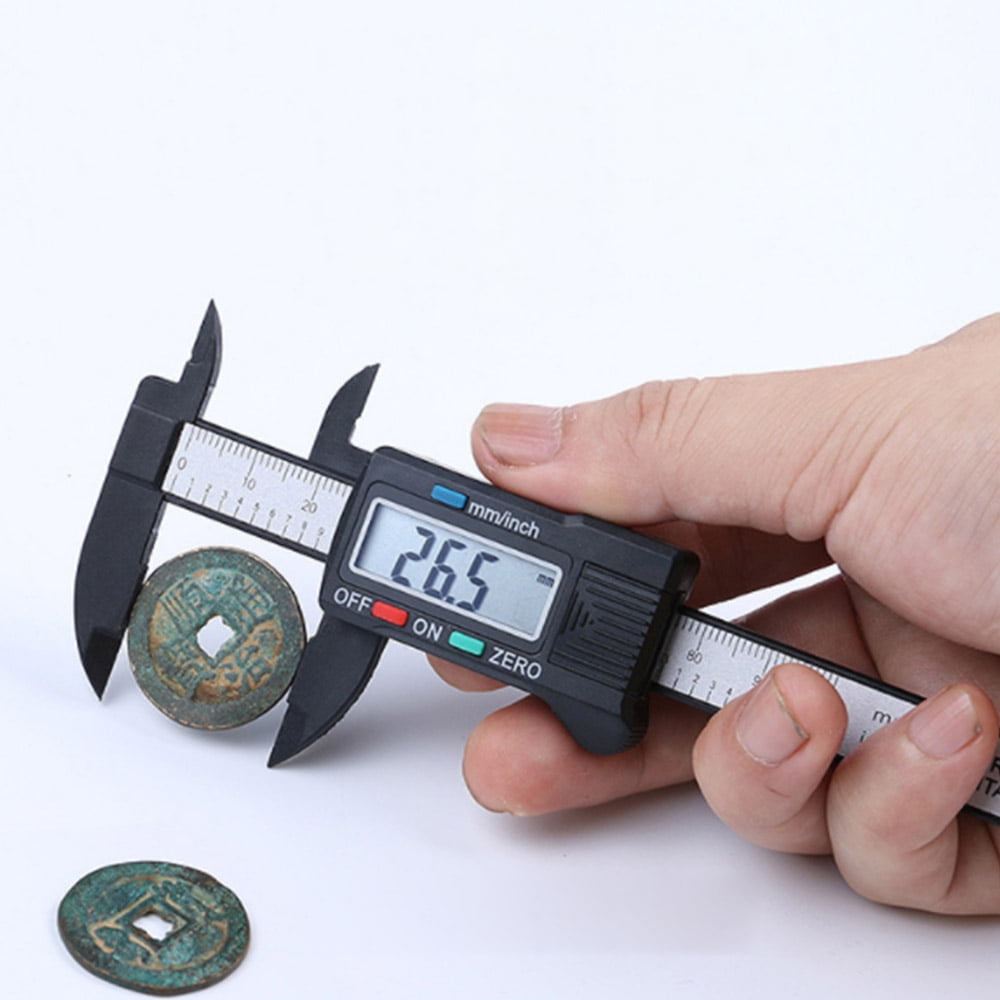
The reason is they have the accuracy of Starrett and Woodpecker, but not the prices.
Screen calipers tool how to#
If you have read this or my article on how to measure and mark wood, you will know I prefer iGaging tools. Do this by slipping them between the plunge mechanism stop as you raise and lower it to get the perfect height. The feeler gauge blades can become the micro-adjustments. Using a feeler gauge to measure a gap that has opened up in my workbench after 30 yearsĪnother use for feeler gauges is when using plunge routers without micro-adjustments. Record your measurement, and you’re all set! All you need to do now is open up the caliper until the fixed jaw bottoms out against the lower step. Put the sliding jaw on the upper “step” of the To make a step measurement, open the caliper about 1/8″ or so. You could use this to measure the depth of a rabbet, for instance. Step measurements give you a measurement from the bottom of one “step” to the next. Most people don’t realize you can make step measurements with a caliper.

Be sure to keep the caliper perfectly vertical to the hole when measuring depth. Once you hit bottom, read the dial or LCD screen and record the measurement. By placing the machined end of the caliper against the rim of the hole or area you want to get a depth reading on, you can open the jaws until bottoming out the depth gauge. You use thisĮxtended gauge to make depth measurements. Getting Depth Measurements with CalipersĬalipers include a depth gauge that extends at the very end of the tool as you open the jaws. Similar to how you can get off-kilter with an outside measurement, take special care that you are perfectly square to the material when taking an inside measurement. Once you have the smaller jaws inside, open up the caliper until they make contact with the inside of the material and won’t extend further. This time, close the jaws so that they are small enough to get inside whatever you are measuring. Take a measurement in much the same manner as you did with the outside measurement. Manufacturers have placed these jaws precisely so that the outside distance lines up exactly with the measurement between the larger main jaws. You use these smaller jaws to make inside measurements. On the backside of most calipers, you can find “reverse” jaws. Even a small amount of grease or dirt throws off your accuracy. You also want to make sure nothing gets between the jaws of the caliper and the material. If not, you actually end up taking an “oval” measurement. For example, if you measure a pipe, the calipers need to be perfectly perpendicular to the length of the pipe. One thing you need to take into account involves the angle of the calipers to the measurement you take. All you need to do after that is read the measurement on the dial or LCD screen.

You want to slide the jaws until they firmly contact the workpiece, however, don’t feel the need to try and apply excessive pressure. You simply slide open the jaws and close them again around the object being measured. The easiest, most direct measurement you can make with calipers involves taking an outside measurement. Inside Depth Step Outside Using Calipers to Make Outside Measurements The only way to know is to measure it with calipers. Advanced woodworkers know every sheet of plywood is of a different thickness. Intermediate woodworkers know that 3/4” is actually 23/32”. Then they will drop the plywood in, and it does not fit because plywood is not the dimension it claims to be. New woodworkers will make their first dado for 3/4” plywood 3/4” wide. You can even measure a small sphere with them. Calipers are great when you need to measure tricky objects like a pipe inside or outside. Another use is to measure how thick my board is to know if I have planed it thin enough. I also measure the depth of holes I am drilling. I use my calipers as precision measuring tools when measuring drill bits to see what diameter they are if they are not in an index. You can hold calipers in one of four positions, and each one takes the exact measurement: outside, inside, depth, and step (see photos below). Many highly rated models from Amazon are available for less than $25, but my favorite set is iGaging. You don’t need the costly models for woodworking purposes.

The digital has memory recall functions and can show both metric and imperial measurements. All three types are accurate to 0.001-inch. Once you go digital, you will never go back, especially when you get older and your eyesight worsens. When buying a new set, I recommend you go digital.

The digital also measure metric with the push of a button The other calipers measure down to 0.001″. The Nylon calipers measure fractions to 1/64″ but only measure decimals to 0.01″. Nylon calipers, dial calipers, and digital calipers are popular with woodworkers.


 0 kommentar(er)
0 kommentar(er)
